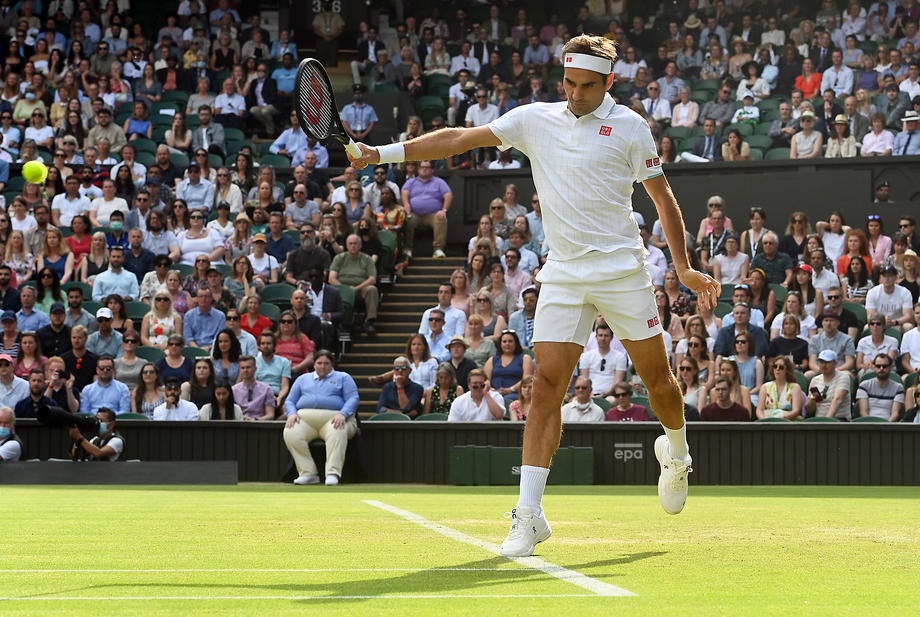- Ricky’s picks for this week’s ATP 500 in Rotterdam
- ABN AMRO Rotterdam Open Draw and Schedule of Play for Wednesday, February 5, 2025
- Former No. 1 Simona Halep Announces Her Retirement At Age 33
- ABN AMRO Rotterdam Open Draw and Schedule of Play for Tuesday, February 4, 2025
- Petra Kvitova Will Launch Her Comeback in Austin
- Rotterdam ATP 500 draw: Alcaraz, Medvedev, Rublev headline stacked field
- ABN AMRO Rotterdam Open Qualifying Draw and Schedule of Play for Saturday, February 1, 2025
- Taylor Fritz to Play Opening Match February 13 in Historic Delray Beach Open Three-Peat Quest
- Stars Join Forces for Eisenhower Cup Return to Indian Wells on March 4
- Ken Thomas Broadcasting from Georgia’s Rome Tennis Open
- Solinco Launches All-New Whiteout V2 Racquet
- Stringlet: Serving Up Tennis Inspiration With A Twist
- Davis Cup qualifying to feature Brazil vs. France and Spain vs. Switzerland
- 2025 US Open Expands to Sunday Start
- Tennis Channel To Broadcast U.S. Davis Cup Qualifier vs. Tawain
ATP Issues Statement on PTPA
- Updated: June 23, 2021

The ATP has sent a message to the PTPA: your organization is dividing players and creating further fragmentation of the sport.
World No. 1 Novak Djokovic, Vasek Pospisil and John Isner are among the players who created and launched the Professional Tennis Players Association (PTPA) last August before the US Open.
Last fall, Djokovic was among the PTPA members nominated to return to the ATP Player Council. However the ATP board passed a rule preventing active players from being part of both the ATP Player Council and an outside organization, Djokovic said.
Djokovic said it sends a clear message: the ATP has no interest in cooperating with the Djokovic-led PTPA.
“I was saying before and I’m going to say it again: We want to collaborate with ATP, and we want to be able to potentially have a place in the ecosystem, because this is what players deserve,” Djokovic told the media at the ATP Finals last fall. “Now with this rule that has been voted on last night, that actually is a strong message from ATP that they don’t want PTPA at all in the system, and they don’t want any player, you know, involved in council and PTPA at the same time.”
Today, the ATP issued this statement on the PTPA:
| ATP STATEMENT REGARDING PTPA Protecting and advancing the interests of players has been a core principle of the ATP since it was founded as a player association in 1972. In 1990, this was furthered through the formation of the ATP Tour, an equal partnership between players and tournaments. Through this, players obtained something unique in sports: an equal voice on every decision in the board room of the Tour. Today, ATP management, together with the Board and the ATP Player Council, whose representatives are democratically elected by all players, work week-in and week-out to advance the interests of players. This includes the recent development of an ambitious Strategic Plan that has the potential to deliver game-changing benefits to players through strengthened top tier events, 50-50 profit sharing, increased prize money and bonus pool, full transparency of audited tournament financials, raised tournament standards and long-term stability for the Tour. This constructive collaboration, which has seen the ATP Tour develop into one of the world’s leading sports & entertainment properties over the past 30 years, underscores our belief that the players’ interests, and those of the Tour as a whole, must and will continue to be protected under ATP governance. By contrast, the creation of a separate player entity provides a clear overlap, divides the players, and further fragments the sport. Fragmentation has been consistently identified as the single biggest threat to tennis’ growth potential by leading experts, from within and beyond sports, which is something the ATP is currently working to address through the Strategic Plan, as well as through the new T-7 working group, with enhanced collaboration with the WTA, Grand Slams and ITF. We also take this opportunity to highlight the numerous benefits associated with players being in good standing with ATP, including annual pension contributions, travel grants, insurance cover, bonus pool payments, player and medical services, and more. ATP will continue to do everything in its powers to protect the interest of its members, both players and tournaments, and the many livelihoods that the Tour supports. |






